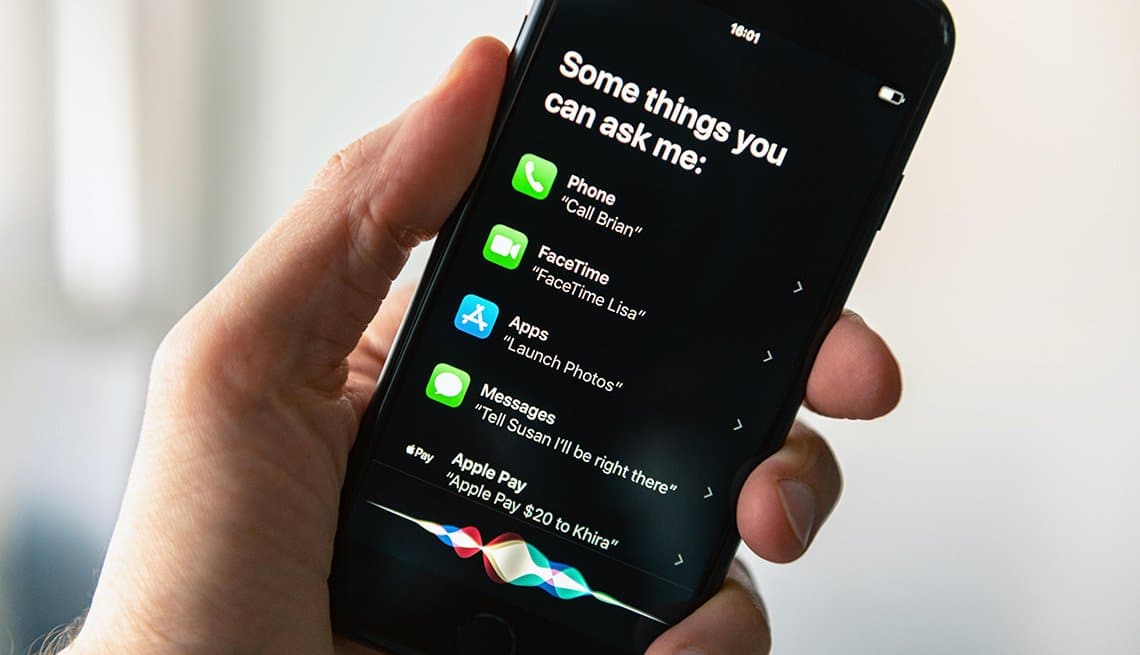From enhanced language understanding to integration with ChatGPT, Apple Intelligence offers a glimpse into the future of personal digital assistants. Here’s an in-depth look at the latest features and what’s on the horizon for Siri.
Redesigned Siri Interface for a Modern Look
Siri’s updated design reflects Apple’s commitment to blending aesthetics with functionality. When activated, Siri now displays a vibrant, variegated glow that envelops the iPhone screen. This colorful animation, featuring shades of pink, purple, blue, and orange, dynamically shifts as Siri processes commands. This visual redesign replaces the older, static wavelength graphic, giving users a more engaging experience that feels alive and responsive.
Enhanced Language Processing and Context Awareness
Siri’s language capabilities have undergone a significant upgrade. With better understanding of conversational language, Siri can now handle incomplete or mid-sentence corrections without confusion. This makes it easier for users to communicate naturally, even if they stumble over their words or revise their requests on the fly.
One of Siri’s most impressive advancements is its ability to maintain context across multiple requests. For example, if you ask Siri to schedule a calendar event, you can follow up by asking, “What will the weather be like there?” Siri will understand the context of “there,” using the location from the previous request. This contextual awareness enhances the assistant’s usability, making it feel more intuitive and human-like.
Type to Siri for Quiet Interactions
Recognizing the need for silent and discreet communication, Apple has introduced a built-in Type to Siri feature. Accessible on iPhones, iPads, and Macs, this feature lets users type their requests instead of speaking aloud. For example, in a quiet library or crowded public space, users can simply double-tap the bottom of the screen to bring up a text bar and interact with Siri silently.
Siri can also provide text-based responses, eliminating the need for verbal feedback. This enhancement is particularly useful for situations where privacy or noise considerations make speaking to Siri impractical.
ChatGPT Integration: A Powerful Collaboration
Apple has partnered with OpenAI to integrate ChatGPT into Siri, beginning with iOS 18.2. This collaboration allows Siri to tap into ChatGPT’s extensive knowledge and capabilities, enabling it to handle more complex queries and tasks. If Siri encounters a question it cannot resolve on its own, it can now send the query to ChatGPT with the user’s permission, delivering a more comprehensive response.
Examples of ChatGPT-Enhanced Queries
- “What are five types of edible mushrooms in North Carolina?”
- “Suggest some activities for a rainy weekend.”
- “How can I replace eggs in a recipe?”
ChatGPT’s integration also extends to content creation. Siri can ask ChatGPT to write poems, generate social media posts, summarize documents, or even suggest travel itineraries. For image-related tasks, Siri uses the DALL-E 3 engine to generate AI images based on user prompts. This combination of natural language processing and creative generation makes Siri a versatile assistant for work and play.
Smarter Document and Object Interaction
Siri’s capabilities now extend to interacting with documents and images. Users can ask Siri to summarize PDFs, identify objects in photos, or even analyze scenes through the camera. For instance, pointing the camera at a plant and asking, “What is this?” prompts Siri to send the image to ChatGPT for detailed information.
This feature is particularly beneficial for visually impaired users, as Siri can describe scenes in real-time. Additionally, Siri can analyze and summarize emails or documents, saving time and simplifying workflows. Whether you need a quick overview of a lengthy contract or a detailed explanation of an insurance policy, Siri can provide tailored assistance.
Improved Voice and Personalization
Siri’s voice has been refined to sound more natural and conversational. This improvement enhances the user experience, making interactions feel less robotic and more personable. Additionally, Siri’s ability to learn from user behavior is expanding, with plans for personal context tracking in future updates. This feature will enable Siri to remember specific details, such as shared files, email conversations, and even personal preferences, to offer more tailored assistance.
Expanding Siri’s Role on Mac Devices
While much of the focus has been on iPhone and iPad updates, Siri’s enhancements are equally impactful on Macs. The Type to Siri feature can be enabled on macOS, with customizable shortcuts like double-tapping the Command key for easy access. Whether you’re drafting an email, troubleshooting a feature, or managing files, Siri on Mac offers the same advanced capabilities as its mobile counterpart.
Upcoming Features: A Glimpse into the Future
Apple is planning several groundbreaking features for Siri in 2025, further solidifying its position as a leader in AI-driven assistants. These updates will expand Siri’s functionality, making it an indispensable tool for personal and professional tasks.
Personal Context Learning
Siri will soon be able to track and organize personal data across emails, messages, and files. For example:
- “Show me the files Eric sent me last week.”
- “What’s the recipe Eric shared with me?”
This level of personalization will streamline information retrieval, reducing the need for manual searches.
Onscreen Awareness
Siri’s ability to recognize and interact with on-screen content is set to improve significantly. If you’re viewing an address in a message, you can ask Siri to save it to a contact. Similarly, Siri will be able to move files between apps or edit photos before sharing them, all based on on-screen cues.
Deeper App Integration
Apple is enhancing Siri’s ability to perform complex tasks within and across apps. Examples include editing photos, drafting and sending emails, or sharing navigation details with contacts. These updates promise a more seamless and interconnected experience across Apple’s ecosystem.
Privacy-Focused Design
Apple’s commitment to privacy remains central to Apple Intelligence. Most tasks are processed on-device, ensuring user data stays secure. For requests requiring cloud processing, Apple uses its Private Cloud Compute system, designed to handle data securely without storing it. Users can also control their interaction settings, enabling or disabling ChatGPT integration and confirming data-sharing requests as needed.
Device Compatibility
Apple Intelligence is compatible with the latest Apple silicon devices, including:
- iPhone 15 Pro and Pro Max
- All iPhone 16 models
- iPad mini with A17 Pro chip
- iPads and Macs with Apple silicon chips
These hardware requirements ensure the performance capabilities necessary for running advanced AI features.
Next-Generation Siri: A New Era
In 2025, Apple plans to unveil an entirely new version of Siri powered by large language models (LLMs). This advanced iteration will enable ongoing, human-like conversations and perform more complex, multi-step tasks. Unlike the current version, which often relies on ChatGPT for advanced queries, the LLM-powered Siri will operate independently, offering a cohesive and unified AI experience. Apple expects to launch this version with iOS 19, laying the foundation for a new standard in virtual assistant technology.
Preparing for iOS 18.2 and Beyond
The release of iOS 18.2, scheduled for December 9, 2024, marks the next major milestone for Siri. With features like enhanced ChatGPT integration, image generation, and smarter document analysis, users can expect significant improvements in productivity and creativity. As Apple continues to refine and expand Siri’s capabilities, the assistant is poised to become an even more integral part of daily life.
For those eager to explore Apple Intelligence, the future promises exciting possibilities. Siri’s evolution demonstrates Apple’s commitment to innovation, ensuring its virtual assistant remains at the forefront of AI-driven technology.











